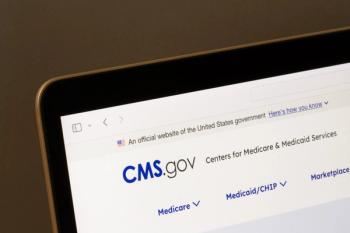
With new incentives, will more hospitals join 340B discount program?
Of the 1,100 public hospitals that treat a disproportionately large share of indigent patients and that are eligible to participate in the federal government's 340B drug discount program, about 700 are not enrolled. This means that up to 63% of disproportionate share hospitals (DSHs) are not taking advantage of potential discounts.
Of the 1,100 public hospitals that treat a disproportionately large share of indigent patients and that are eligible to participate in the federal government's 340B drug discount program, about 700 are not enrolled. This means that up to 63% of disproportionate share hospitals (DSHs) are not taking advantage of potential discounts.
These sobering statistics were revealed by Ted Slafsky, executive director of the Public Hospital Pharmacy Coalition (PHPC), at a 340B conference held in San Diego recently. The conference was sponsored by PHPC and Medicine for People in Need (Medpin). Yet, conference attendees working at 340B-enrolled DSH facilities generally expressed the view that discounts from the program were dramatic and crucial to their bottom lines and to fulfilling their missions. And several states are or will be encouraging or requiring hospitals in their states to enroll in the 340B program.
What's preventing DSHs from participating? Entities contemplating enrolling in this program do come up against uncertainties. No 340B price list is available, so DSHs won't know the drug prices they will pay until after they enroll (when they can then get prices from drugmakers). Although the formulas used to calculate the minimum 340B rebate are established by federal statute and are in the public domain, the calculations are based on values of the "average manufacturer price" and the "best price"-values unknowable to potential enrollees.
A study done by Mathematica Policy Research reported that more than half the 340B facilities save more than 30% on prescription drug expenses compared with what they would have paid if they weren't participating. And Mitchell said that 340B participation delivers cost savings of 20% to 50% on outpatient drug purchases. Although these statistics are reassuring, they don't tell a potential enrollee what its actual financial benefit will be. Thus, it is difficult for potential 340B participants to evaluate accurately the program's benefits to their own facility.
Nevertheless, once they enroll, hospitals will have to sever any relationships they may have with group purchasing organizations (GPOs) that are currently giving them discounts of known magnitudes on outpatient drugs. They will have three months to do so.
According to speakers at the conference, the revamped Prime Vendor Program (PVP) may tip the scales in the minds of potential 340B participants. Christopher A. Hatwig, senior director of the 340B Prime Vendor Program, which is managed by HealthCare Purchasing Partners International (HPPI), explained its benefits at the conference.
The law that established the 340B program mandated that the government select one prime vendor to negotiate sub-ceiling prices for 340B participating entities and to establish a distribution network for pharmaceuticals to those entities. In September 2004, HRSA awarded the prime vendor contract to HPPI. This PVP is available only to 340B entities and is voluntary. According to Hatwig, the program has been growing rapidly, currently with more than 900 participating 340B entities.
The participants' primary benefit is that drug prices below the 340B ceiling prices are negotiated for them, but they also receive additional benefits, such as access to other products and services with discount pricing for diabetes supplies, auditing and overcharge recovery services, software for patient assistance, split-billing software solutions, bar-coding software and hardware, unit-of-use and repackaging services, and inventory management and tracking systems. Increase in market share seems to be the primary incentive for suppliers' participation.
Hatwig's group has successfully convinced suppliers to give extra discounts to 340B entities participating in the PVP, which led to drug prices that range from 1.5% to 35% below the standard 340B prices. He said many companies have signed on and more are in negotiations. More than 1,500 hyper-discounted products are available to PVP participants through these suppliers.
340B entities can join the PVP for free, and they do not have to change their distributors or relinquish previously negotiated sub-ceiling 340B drug discounts, as long as these discounts were not negotiated by another GPO. Public health advocates hope the perceived benefits of the 340B program plus the added benefits of the PVP will induce eligible entities to apply for the 340B program despite its lack of transparency.
Lorraine Lica, Ph.D. is a writer based in San Diego.
Newsletter
Pharmacy practice is always changing. Stay ahead of the curve with the Drug Topics newsletter and get the latest drug information, industry trends, and patient care tips.





















































































































































